Striking Originality
The advancement of technology meant the computer becoming stronger than ever. Chess is now more preparation dependant than ever. If you go unprepared to a tournament, you might quite possibly lose the game in the opening or in the early middlegame. A strong endgame knowledge will also seem futile. Almost everyone is ready to blitz out their preparation. The originality in play is getting reduced with the vast availability of readymade materials. A lot of players may think pushing the h-pawn is an Alpha Zero innovation, GM Sundararajan Kidambi shows examples of different players where they did long before computer became a necessity. He talks about Striking Originality on GM M R Venkatesh's 37th birthday, 20th May 2022, the day he published this on his blog. Photo: Shahid Ahmed


"It is better to fail in originality than to succeed in imitation" - Herman Melville
I agree with this quote in part, as the ideas of success or failure seems moot to me especially when viewing chess as an art. To me originality is even more important in this age of information than in any other time.
Today is the birthday of my friend and a long time colleague, Grandmaster M R Venkatesh. On this occasion, I happened to think about some of his games and some of his memories. I know him from the time he was perhaps 7 or 8 and what was always striking about his (chess) personality from then was his original approach to the game. Earlier, I attributed it (incorrectly so!) to his lack of formal training. But with passing age, I am able to keenly appreciate this quality in a chess player as the most profound one! There were always instances of awe, surprise, disdain and mockery too when coming across some of his decisions, but with time when one grows over those immediate emotions they seem to show the unique chess artist that he indeed is.
From my observation I have found him to be a raw artist who had good visualization skills and was quite alert to tactics and especially so if there was a possibility of creating an attack. He has won innumerable games with, not only masterpieces but also attack springing out of nowhere and the opponents left with a feeling of 'my position was good, but he defeated me with an unsound attack' too! In this regard, I find a similarity in chess approach of his with the legendary Judit Polgar. A strong tactical and attacking feel overpowers inferior opening or middlegame positions many a time. This has proved right many a time in practice and is also quite logical as a checkmate ends the game!
Last year, FM FT Niranjan Navalgund had produced a well researched video about Venkatesh's most interesting games after duly consulting with him. I have shared the link above for interested viewers to see those excellent games.
In the current article, I do the exact opposite - no research, but just some spontaneous thoughts! First, I share a game of what caught my eye while randomly looking at the database. Venkatesh plays White against the German Grandmaster Huschenbeth from the Gibraltar event 2018.
1.e4 c5 2.c3 Nf6 3. e5 Nd5 4.Nf3 d6 5.Bc4 dxe5 6.Nxe5 e6
Venkatesh - Niclas, Gibraltar 2018

To me already this looks to be a fresh position compared with other heavily analysed lines of the Alapin Sicilian.
7.0-0 Bd6 8.d4 0-0 9.Nd2!?
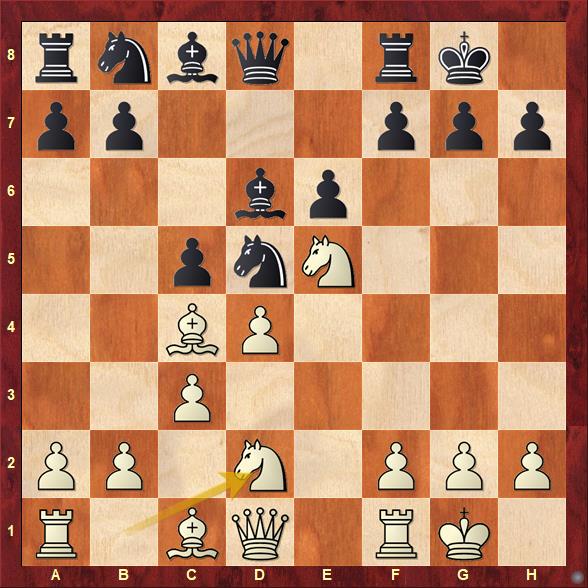
The knight seldom lands on d2 in IQP (Isolated Queen Pawn) positions, but there you go! He does not have any preformed bias about how to treat a particular position. Creativity can very well kick in in unforeseen ways even early on in chess.
9.... cxd4 10.cxd4 Qc7 11.Re1 Nc6 12.Nef3!?
Whether it is objectively good or not is not important, there is a certain feeling that White has somewhat misplayed the opening. But what is important is that White wants to retain attacking chances by maintaining as much forces as possible on the board.
12...Ncb4 13.a3 b5!?

14.Bxd5! I am pretty sure that he made this decision without even batting an eyelid. Normally it is not an easy decision to give up the light square bishop for a knight but in this position, given the situation he has, he needs to do what he absolutely has to. Smyslov's decisions against Ribli from their candidates match comes to mind, though I must say it is quite different also. On this note, another incident comes to mind. We were solving the following position setup by Jacob Aagard in one of his training camps in Chennai. He was later mentioning that none of the Grandmasters whom he had given to, had actually solved this problem including Gelfand. Needless to say, Venkatesh solved it easily and so the game decision was even easier for him.
Aagard - Rowson, Gibraltar 2007

The above diagram is a position from a game between Aagard and Rowson where White did not manage to find the winning decision here. Interested readers may check it out! Solutions in the replayable game link at the end of the article.
Back to the main game.
14...Nxd5 15.Ne4 Bb7 16.Bd2!?
An unassuming move, but White takes his time to get his pieces out into the game, little by little.
16...Rac8 17. Rac1 Qb6 18. Ne5!?
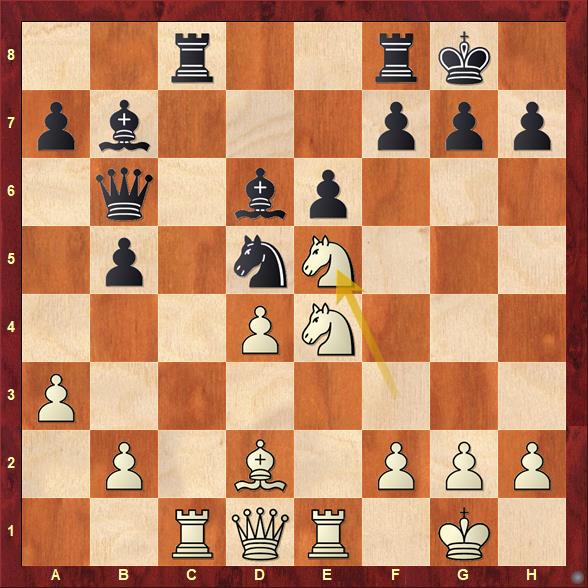
The knight which earlier retreated to avoid exchanges, comes back to its logical square. White utilizes the tactics in the position to get his pieces back to proper squares...
18...Rxc1 19.Bxc1 Qc7 20.Nxd6 Qxd6
Finally White has also managed to exchange opponent's academic good Bishop for this pawn structure( Dark Squared one), nevertheless it is hard to imagine that Black's remaining Bishop is not better than White's remaining one!
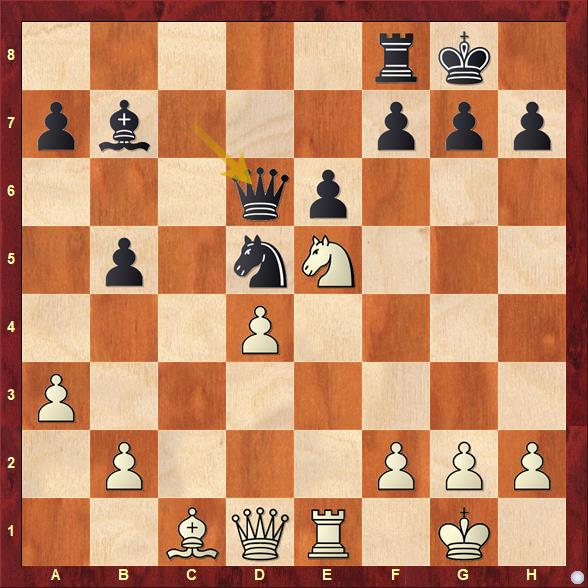
Here White would ideally like to bring some of his pieces to provoke some weaknesses on Black's kingside. A direct attempt like 21.Qg4 would be of no avail as Black has the very strong response 21...Nf6! This would clear the d5-square for the queen and White makes no headway towards provoking any sort of weaknesses on the kingside. So White went for
21.Qb3! a6 22.Qg3
Quite concrete play. White used the threat to the b5-pawn to reach a safer square on the kingside - namely g3. Here, Black cannot gain a tempo with a future ...Nf6
22...Rc8 23.Bh6 g6 24.h4!
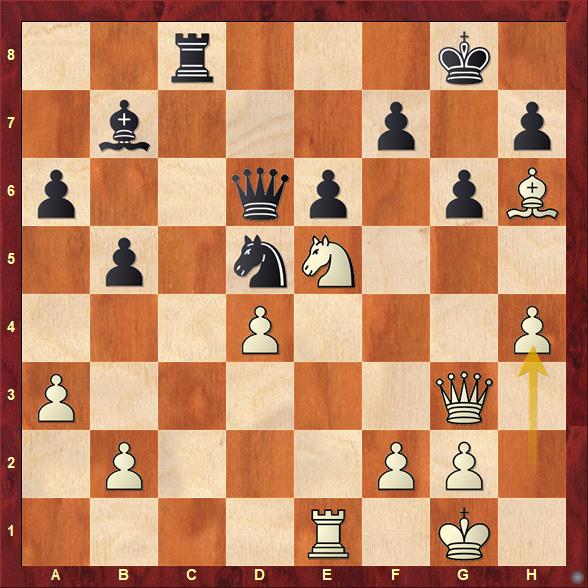
All of a sudden, White has made some progress towards an attack against opponent's king. Suddenly his bishop on h6 in the vicinity of opponent's king seems threatening. White also brings in all forces to soften up the weakness on g6 with h4-h5. An idea such as ...Ne7 by Black would be answered by the tactical shot Nxg6! Black's formally good-looking pieces like the knight on d5 and the beautiful bishop on the long diagonal suddenly seem to lack perspective in the crucial sector of the board. For a practical player playing Black this is enough trouble and he has more of a headache if his mind goes back a few moves and contemplates the safe and solid edge he seemingly had!
24...f6 25.h5!
Yes, White will relentlessly attack, as Capa would like to quip 'Enmasse'
25... fxe5?
I do not envy the situation of the Black player. No one likes to be the object of such an onslaught. And no wonder, mistakes creep in. Tartakower was spot on when he said 'The Game of Chess owes its existence to such mistakes'! For the record, Black had a defence in giving up a pawn with 26... Nc7 27.Ng6 Qxg3 28.Nxe7+ Kf7 29. fxg3 Kxe7 Black can hold this position as White has a deficiency in pawn structure and Black has the better bishop in a position of Opposite Coloured Bishops. However, one knows from practical experience that these are the hardest decisions to make. Do you accept the offered piece or sacrifice a pawn!? - Try solving this question in the heat of the battle!
26.hxg6 Qe7 27.Re5 Kh8 28.gxh7
White mercilessly opens up the last of black king's pawn cover.
28...Qf6 29.Rxe6

29...Qxd4 30.Re5! 1-0
White's switchback with rook blocks the queen's path to defend her king and Black had to give up. A wonderful game. A nonchalant opening phase was followed by a preparatory middlegame phase and then all of a sudden there was blitzkrieg finish. I have seen this numerous times in Venkatesh's games since childhood and have thoroughly enjoyed them, even at times from the receiving end.
In comparison, I was reminded of a game of a young Judit Polgar while eyeing this game.
Judit - Tiviakov, Madrid 1994

We join the action after Black's move 15 in the game between Polgar and Tiviakov from Madrid 1994
White continued with
16.a3 Bb7 17.Bd3 Rc8 18.Bb1 b5 19.Qd3
Note how White is taking her time to create a complex position with all pieces remaining on the board and intending to hit at the opponent's Kingside if given an opportunity. However one has to admit that if we look at it objectively White may not have made the critical moves and may have allowed Black to comfortably equalize.
19..Na5 20.Ne5 Nc4

21.Rc2!? As we saw in the last game, here White understands that she does not hold any grounds to embark on an attack( this can only backfire!) but instead accepts to make patient even slightly defensive moves. Patience is the key in attack too, natural attackers seem to sense this. An apt Tamil proverb goes 'பொறுத்தார் பூமி ஆள்வார்'. It means - Those who can wait will end up ruling the World!
21...Nd6
The problem for Black in such positions is one of a choice, many moves look good and it is possible to stray if one takes it too easy.
22.f3
White is careful to prevent any forays on e4 and at the same time is ready to drop her Bishop back to f2 in order to defend the isolani on d4 if needed.
22...g6 23.Bf2 Re8 24.Ba2 Bf8 25.Re2 Bg7 26.Rfe1

Note how effectively White has placed her pieces in the cardinal sector of the board - everything in the centre and/or pointing at the opponent's kingside. As of now, White still keep waiting constructively and keeps herself ready to pounce, if needed, like a cat!
26...Nd5 27. Nxd5 exd5?
Black slackens, perhaps as a result of the deceptively simple moves on the opponent's part and takes way too much liberty. Now his bishop on b7 remains shut out from the game, it was better to continue with 27...Bxd5 maintaining the equilibrium.
28.Qd1!
A wonderful retreat clearing the way for the e5-knight to come to c5 if needed. One always needs to pay attention to weak squares, whether we use them or not comes later!
28....a5 29.h4!
Given an opportunity White inches her way forward with the 'h'-pawn. Logically it also makes sense with a knight on e5. If, White manages to soften Black's structure on g6 then the knight on e5 becomes even more secure, as it cannot be driven away with an f7-f6.
29...Qc7 30.h5!

If you thought that the Rook-Pawn forays began with Alpha Zero, I am sorry you are wrong 😊
Korchnoi said that Strategic activists have a penchant for Rook-Pawn pushes, but here as we see, so do the attacking players!
30...Nc4?
Once again the defender's task is an unenviable one. How does one expect an offer of an exchange of the centralized knight on e5 to be wrong. But Judit exploits a hidden motif in the position.
31.h6!!
Once again a future day Alpha Zero concept. Here it is supported by a fine tactical idea.
31...Bxh6
31...Bf8 White would have continued with 32.Ng4 Rxe2 33.Qxe2 and the pawn on h6 remains a thorn in Black's flesh
32.Ng4! Rxe2 33. Nh6+ Kg7
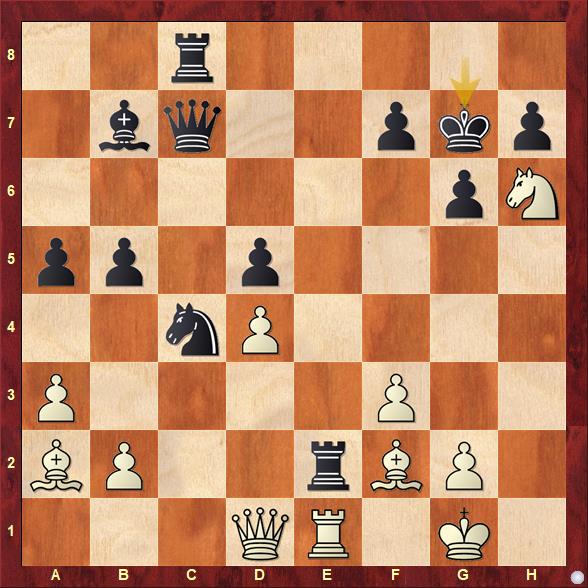
While going for the pawn thrust h6, White obviously had to see until here, but preferably even further. A cursory look at the position suggests the possibility of Nf5+!? That destroys Black's structure and gives a static feature to play on in the future as a compensation for the sacrificed pawn. Also Black's king remains weak. This, however was not what Judit chose. She valued time (tempi) more than structural weakness and instead went for a more brutal yet veiled attack against Black with
34.Re2! Kxh6 35.Qe1!!
Basically, this was White's point. She forced Black to spend a tempo with his king to get to h6 and then White prepares to utilize the weakness on dark squares based on both diagonals and files. Here White's bishop gets to g3 and the rook becomes dominating on the seventh rank with an eventual Re7. Black has no defense against this irresistible onslaught.
35...Kg7 36.Re7 Qb6 37.Bxc4
After this exchange of bishop for a knight, White crashes through with her attack on the dark squares.
37.... bxc4 38.Qe5+ Kg8 39.Be3 (with the idea of Bh6 and a mate on g7) 39...f6 40. Qf4 Kf8 41.Rxh7 Kf8 42.Qh6 1-0
There are a few similarities in the way both the games developed, a quiet opening, a maneuvering equilibrium phase and then an explosive attack that clinched the win. Lack of top opening preparation meant that both White players were always inventive and resourceful in tactics and more importantly development of an attack in an unorthodox yet beautiful manner. With this I conclude by once again wishing a very happy birthday to the fabulously original.
Replay the analyzed games
About the author

ChessBase India is happy to see GM Sundararajan Kidambi writing his fifth post of the year 2022 in his blog "Musings on Chess". Knowing what an encyclopedic knowledge the grandmaster from Chennai possesses, I think we are in for a treat! One can only hope that Kidambi continues writing regularly! We will keep reminding him about it! We are awaiting to read his first post of the year 2022 and be enriched.
Links
The article was edited by Shahid Ahmed





































